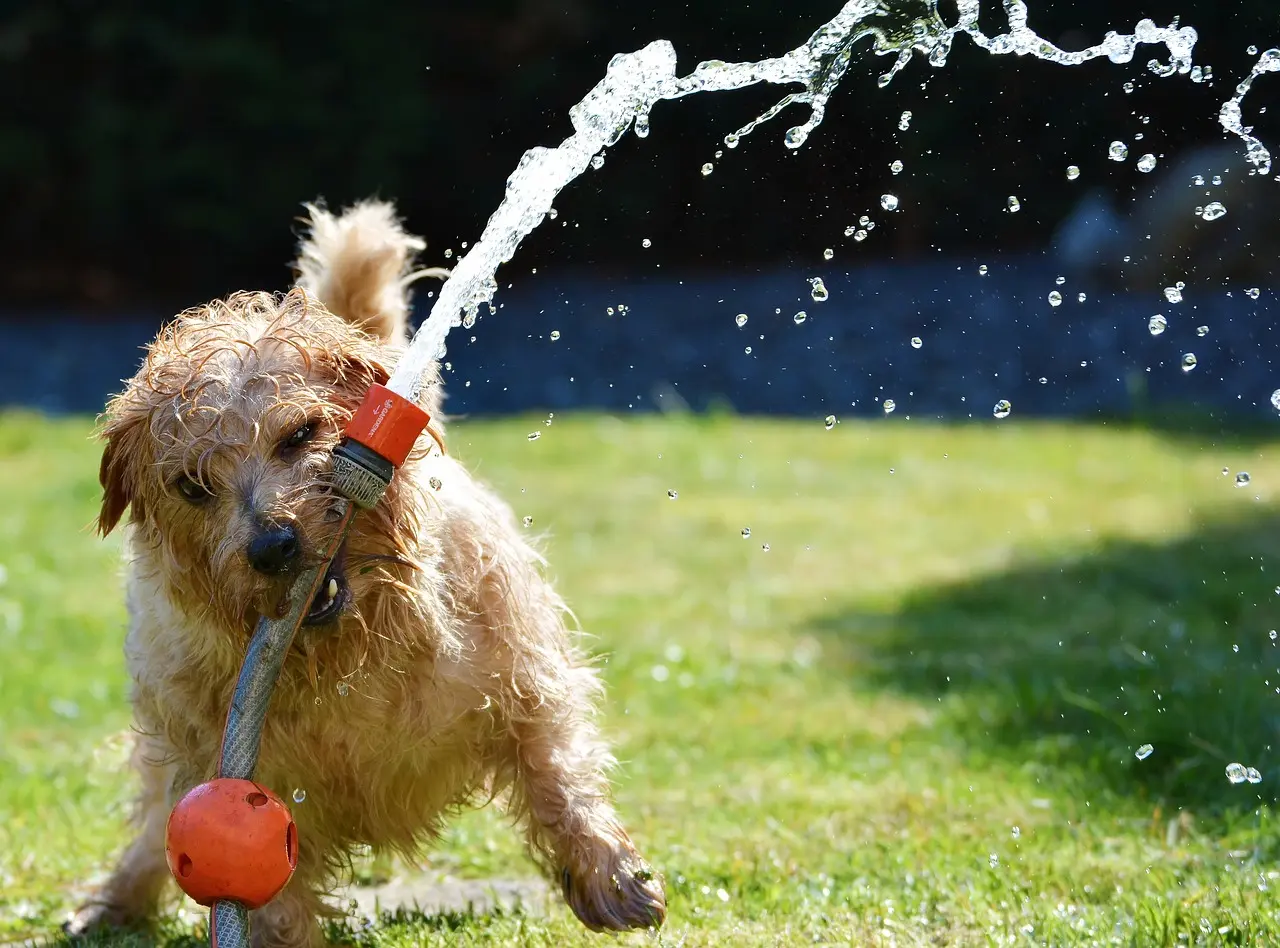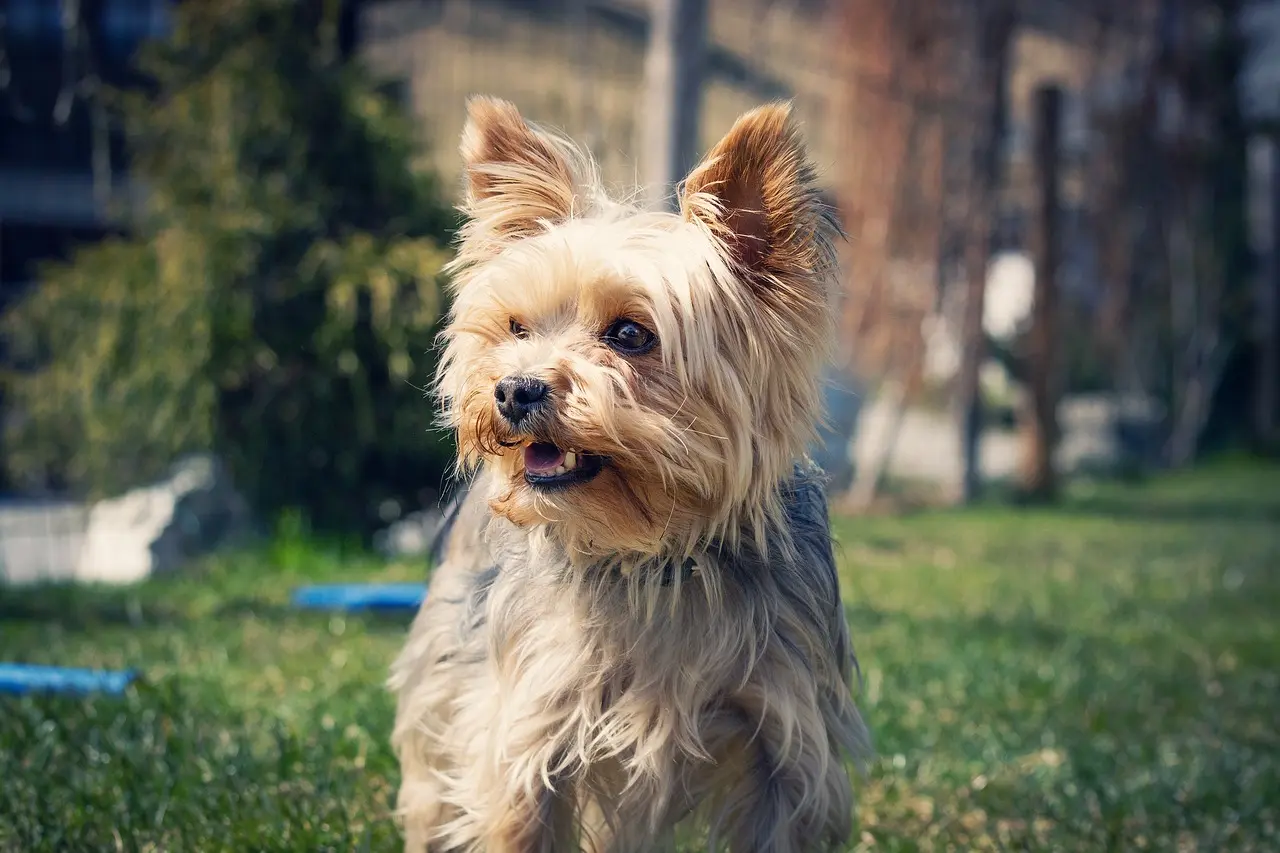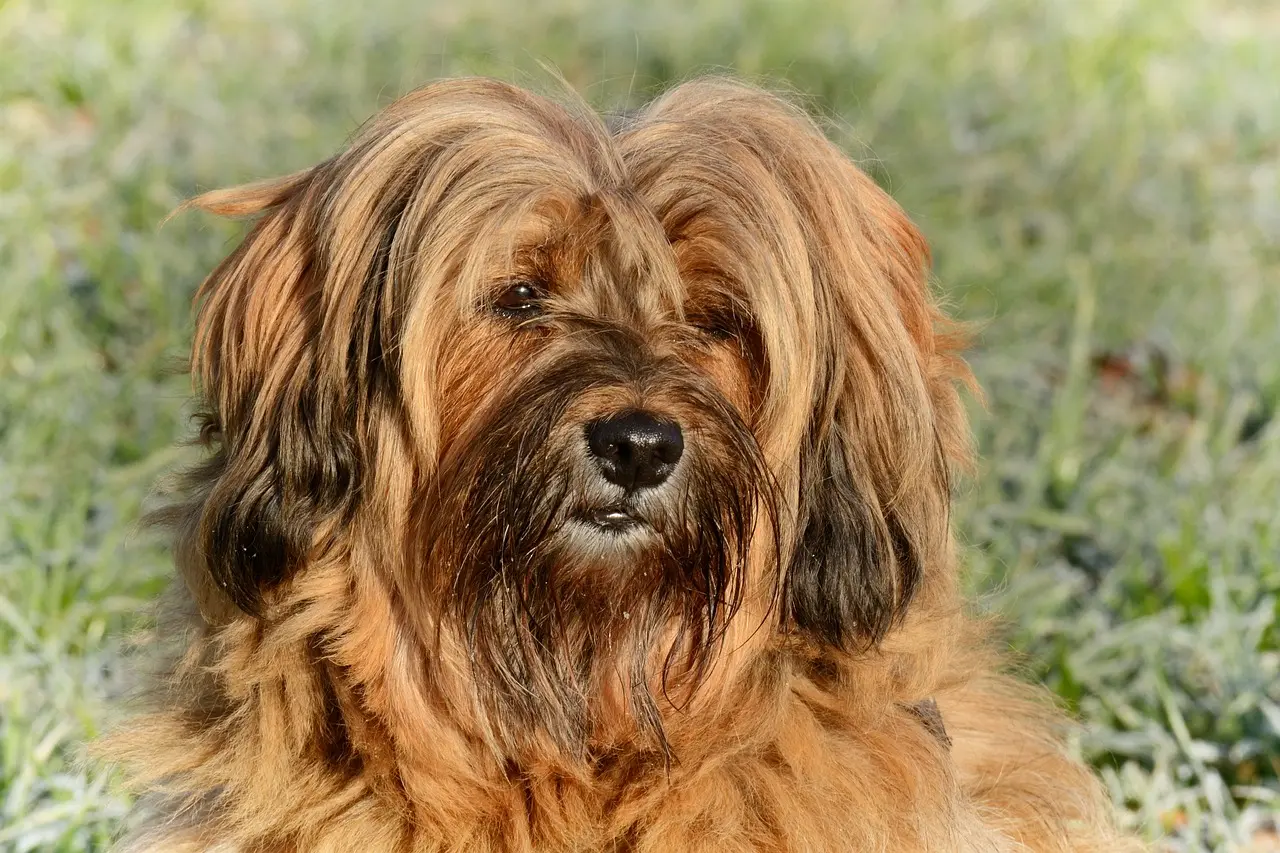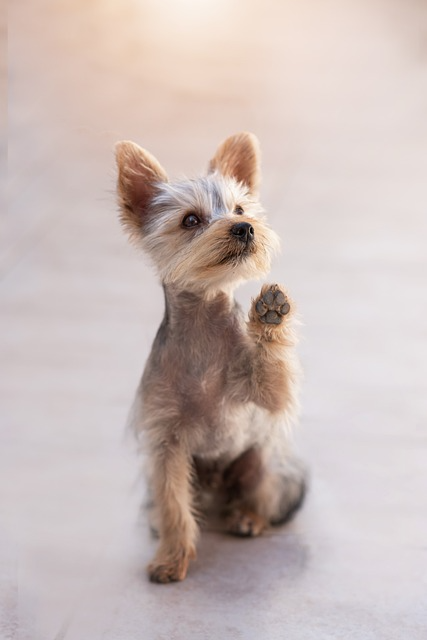Small Terrier breeds are a specific group of Terriers characterized by their compact size, typically weighing between 10 to 25 pounds (4.5 to 11 kg) and standing around 9 to 15 inches (23 to 38 cm) tall at the shoulder.
These breeds are known for their energy, spunk, and distinctive personalities. Some examples of popular small Terrier breeds include the
- Jack Russell Terrier
- Scottish Terrier
- West Highland White Terrier, and
- Yorkshire Terrier.
Within the Terrier family, small Terrier breeds are classified based on their shared traits and purposes. They are often grouped together due to their similar physical characteristics, temperament, and historical roles.
Despite their small stature, these breeds possess a remarkable level of agility, tenacity, and determination that make them excellent working dogs, companions, and family pets.
The popularity of Small Terrier breeds
Small Terrier breeds hold a special place in the hearts of dog lovers around the world. Their compact size makes them well-suited for various living situations, including apartments and houses with limited space. Their energetic nature and playful personalities bring joy and entertainment to households, making them beloved family pets.

These breeds have gained popularity for their charming looks, distinct features, and unique temperaments. Small Terriers often exhibit traits such as loyalty, intelligence, and a fearless attitude. Their spirited nature and natural instincts make them ideal companions for active individuals and families seeking a lively and engaging canine companion.
Moreover, small Terrier breeds have significantly contributed to various roles throughout history. They were bred for tasks such as hunting, vermin control, and guarding. Today, they continue showcasing their versatility in obedience trials, dog sports, and therapy work.
Origin and History of Small Terrier Breeds
Early Origins and Development of Small Terriers
The history of small Terrier breeds can be traced back several centuries. These breeds originated in various regions and were developed for specific purposes. While their exact origins are often debated, it is widely believed that their ancestors can be found in the British Isles.
Small Terriers share common ancestry with larger Terrier breeds. They were selectively bred for their compact size, agility, and specific traits suited for their intended tasks. Terrier breeds were primarily developed to hunt and control vermin, such as rats and foxes, which posed a threat to farms, estates, and households.

Historical Roles and Purposes of Small Terrier Breeds
Throughout history, small Terrier breeds played crucial roles in vermin control and hunting. Their tenacity, intelligence, and ability to fit into tight spaces made them exceptionally skilled at flushing out and capturing small game underground or in dense brush.
These breeds were employed on farms, in mines, and in urban environments to keep pests in check. Their work often involved confronting formidable adversaries and navigating challenging terrain. Their fearless nature, coupled with their keen sense of smell and quick reflexes, made them excellent at their job.
Notable Small Terrier breeds and their contributions
- Jack Russell Terrier: Reverend John Russell, also known as Jack Russell, developed this breed in the 19th century for fox hunting. Their athletic ability and fearless nature allowed them to work alongside hounds, assisting in locating, flushing out, and sometimes even bolting foxes.
- West Highland White Terrier: Originating from Scotland, the West Highland White Terrier, or Westie, was bred to hunt foxes, badgers, and other small game. Their distinctive white coat made them highly visible in the field, ensuring their safety while working in dense vegetation.
- Scottish Terrier: Known for their iconic appearance, Scottish Terriers, or Scotties, were bred in Scotland for hunting vermin, particularly rats and foxes. They were highly regarded for their determination and were often used as working dogs on estates and farms.
- Yorkshire Terrier: The Yorkshire Terrier, or Yorkie, emerged in the 19th century in England. Originally bred for catching rats in clothing mills, they quickly gained popularity as fashionable companion dogs due to their elegant appearance and spirited personality.
Behavior and Temperament of Small Terrier Breeds

General behavioral traits of Small Terriers
Small Terrier breeds share certain behavioral traits that make them unique and distinct from other dog breeds. These traits often contribute to their spirited and lively personalities. Some general behavioral characteristics of small Terriers include:
- High Energy: Small Terriers are known for their abundant energy levels. They are typically active and require regular exercise and mental stimulation to prevent boredom and destructive behaviors.
- Fearlessness: Small Terriers possess a fearless nature and exhibit a confident demeanor. Despite their small size, they are courageous and often undeterred by challenges or larger adversaries.
- Alertness: These breeds are inherently alert and possess keen senses. They are quick to notice changes in their environment and are known to be vocal when they perceive a potential threat or intruder.
Specific temperament characteristics of small Terrier breeds

While each small Terrier breed has its own unique temperament, some characteristics tend to be prevalent across the group. These include:
- Independence: Small Terriers often display an independent streak. They have a strong sense of self and may demonstrate a desire for autonomy in their actions.
- Playfulness: These breeds are known for their playful nature. They enjoy interactive games and engaging activities, making them well-suited for families with active lifestyles.
- Loyalty: Small Terriers are known to be loyal and devoted to their families. They often form strong bonds with their owners and can be protective when they sense a threat to their loved ones.
Behavioral training tips and Techniques for Small Terriers
Training small Terrier breeds requires consistency, patience, and positive reinforcement. Here are some tips and techniques to consider:
- Start Early: Begin training and socialization from a young age to establish good behavior patterns and help your Terrier become well-adjusted.
- Positive Reinforcement: Use rewards such as treats, praise, and play to motivate and reinforce desired behaviors. Small Terriers respond well to positive reinforcement and thrive on rewards-based training methods.
- Mental Stimulation: Incorporate mental stimulation activities, such as puzzle toys and interactive games, to keep your Terrier engaged and mentally challenged.
- Socialization: Expose your small Terrier to various people, animals, and environments to promote positive social behaviors and prevent shyness or aggression.
Tryfi's HighTech collars offer valuable insights into a Terrier's behavior patterns, allowing owners to better understand their pets and address specific behavioral issues. By tracking activity levels, sleep patterns, and other behavioral indicators, these collars provide data that can assist in identifying triggers or patterns associated with certain behaviors.
Health Issues and Care for Small Terrier Breeds

Common health concerns among small Terrier breeds
While small Terrier breeds are generally known for their robust health, there are some common health issues that may affect them. It's important to be aware of these conditions and take proactive measures to ensure the well-being of your small Terrier. Common health concerns among small Terrier breeds may include:
- Patellar Luxation: This condition involves the dislocation of the kneecap and can cause lameness or difficulty in mobility.
- Dental Issues: Small Terriers are prone to dental problems such as tartar buildup, gum disease, and tooth decay. Regular dental care and professional cleanings are essential.
- Skin Allergies: Some small Terrier breeds may be prone to skin allergies, which can manifest as itching, redness, or skin infections. Proper grooming, a balanced diet, and regular veterinary care can help manage these issues.
- Genetic Conditions: Certain small Terrier breeds may have a predisposition to specific genetic conditions such as deafness, eye diseases, or liver shunts. Responsible breeding practices and regular health screenings can help mitigate the risks associated with these conditions.
Proper nutrition and exercise for maintaining small Terrier health
Maintaining a healthy diet and providing regular exercise are crucial aspects of caring for small Terrier breeds. Consider the following guidelines:
- Balanced Diet: Feed your small Terrier a high-quality, balanced diet that meets their specific nutritional needs. Consult with your veterinarian to determine the appropriate portion sizes and types of food suitable for your Terrier's age, size, and activity level.
- Weight Management: Obesity can lead to numerous health problems in small Terriers. Monitor your Terrier's weight and adjust their food intake and exercise routine accordingly to maintain a healthy body condition.
- Regular Exercise: Small Terrier breeds are typically active and energetic. Provide them with regular exercise to keep them physically fit and mentally stimulated. Daily walks, playtime, and interactive toys can help meet their exercise needs.
Tryfi's HighTech collars offer valuable features that can aid in monitoring and managing the health of small Terrier breeds. By using Tryfi's HighTech collars, you can monitor your Terrier's exercise levels and ensure they are getting enough physical activity. The collars can also help identify any changes in sleep patterns, which may indicate underlying health issues or discomfort.
Learning Abilities and Training of Small Terrier Breeds

Small Terrier breeds are known for their intelligence and quick learning abilities. They possess a sharp wit and are often eager to please their owners. Understanding their learning capabilities can help in effectively training them. Key points include:
- High Intelligence: Small Terrier breeds are generally intelligent dogs that can grasp new commands and concepts quickly. Their ability to problem-solve and think independently makes them adaptable learners.
- Determination: Terriers are known for their tenacity and persistence, which can be both advantageous and challenging during training. They may exhibit strong-willed behaviors, requiring patient and consistent training methods.
Effective training methods for small Terrier breeds
When training small Terrier breeds, it is crucial to utilize positive reinforcement techniques and tailor the training to their specific needs. Here are some effective training methods:
- Positive Reinforcement: Reward-based training methods, such as using treats, praise, and play, work well with small Terriers. They respond positively to rewards and are motivated to repeat desired behaviors.
- Consistency and Patience: Consistency in commands, cues, and training routines is important for small Terriers. Establish clear boundaries and rules, and reinforce them consistently. Patience is key when working with these breeds, as they may require extra time to understand and master new commands.
- Mental Stimulation: Small Terrier breeds thrive on mental challenges. Incorporate interactive games, puzzle toys, and scent work that engage their minds. This not only enhances their learning abilities but also prevents boredom and unwanted behaviors.
Other Features and Considerations for Small Terrier Breeds
Grooming needs and coat care for small Terriers
Small Terrier breeds often have unique coat types that require specific grooming and care. Understanding their grooming needs is essential for maintaining their coat's health and appearance. Consider the following:
- Coat Types: Small Terriers can have different coat types, including wiry, silky, or a combination of both. Each coat type requires specific grooming techniques and tools.
- Regular Brushing: Brushing your Terrier's coat regularly helps prevent matting, removes loose hair, and promotes healthy skin and coat. Consult with a professional groomer or breeder to determine the appropriate brushing frequency and techniques for your Terrier's specific coat type.
- Professional Grooming: Some Terrier breeds may require professional grooming to maintain their coat's texture and shape. Professional groomers can also provide services such as hand-stripping or clipping, depending on the breed's requirements.
Socialization and Interaction Requirements for Small Terriers

Small Terrier breeds thrive on social interaction and require proper socialization to develop well-rounded temperaments. Consider the following when it comes to socializing your Terrier:
- Early Socialization: Start socializing your small Terrier from a young age to expose them to various people, animals, and environments. This helps them develop confidence and positive social behaviors.
- Positive Experiences: Ensure that your Terrier has positive experiences during socialization. Gradually expose them to new situations, providing praise and rewards for calm and appropriate behavior.
- Ongoing Interaction: Small Terriers enjoy being part of the family and need regular interaction and companionship. Include them in daily activities, play with them, and provide mental stimulation to prevent boredom and behavioral issues.
- Training Classes: Enroll your Terrier in obedience classes or participate in organized dog activities. This provides opportunities for structured socialization and helps improve their listening skills and overall behavior.
In conclusion, small Terrier breeds are a delightful and spirited group of dogs with many positive attributes. Their intelligence, fearlessness, and loyalty make them wonderful companions for individuals and families alike. With proper training, socialization, and care, small Terriers can thrive and bring joy to their owners' lives.
For more helpful articles about pet-parenting tips, check out the Off Leash blog at TryFi.com.
Want to know more about TryFi.com? The Fi Dog Collar is a GPS tracking collar that not only keeps track of your dog’s location, activity levels, and sleep patterns, but it also alerts you if your dog escapes your backyard. This is the fastest way to find your dog after an escape. Try the Fi Dog Collar today!






